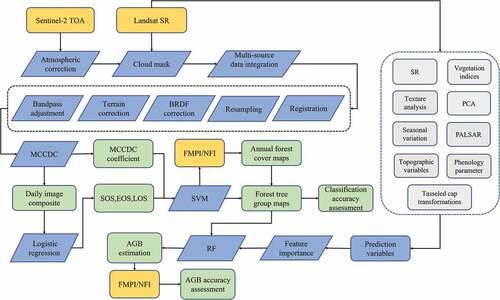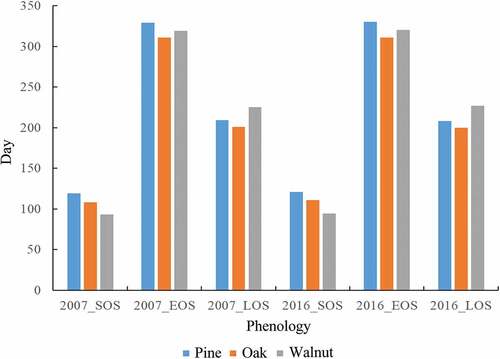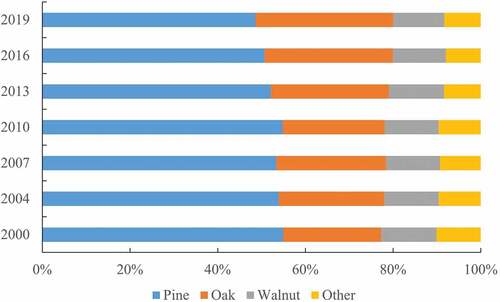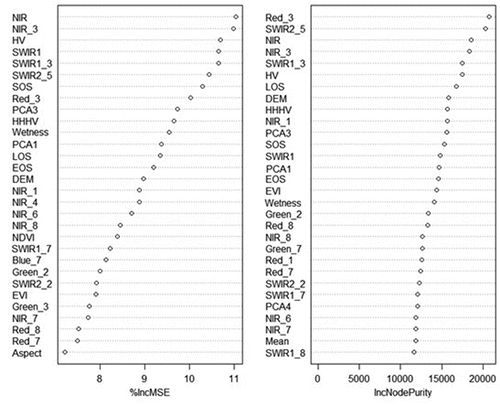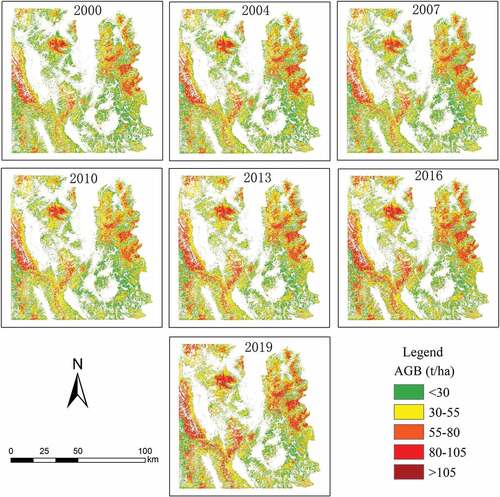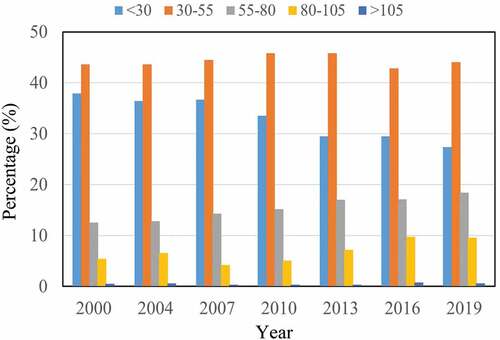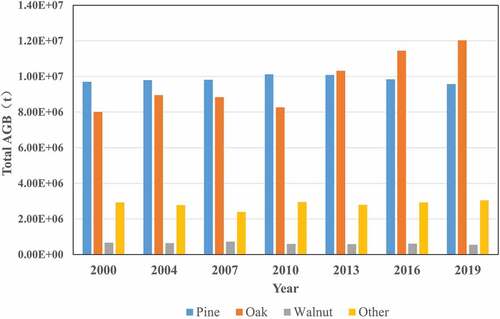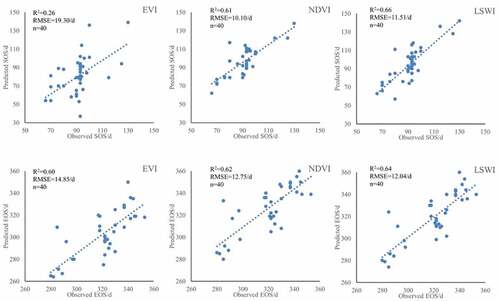Figures & data
Figure 1. Study area; (a-c) show the geographical location of the study area and the phenological observation sites; (d) is a Landsat 8 OLI false-color composite (R: NIR band, G: red band, B: green band) acquired on 15 December 2019.
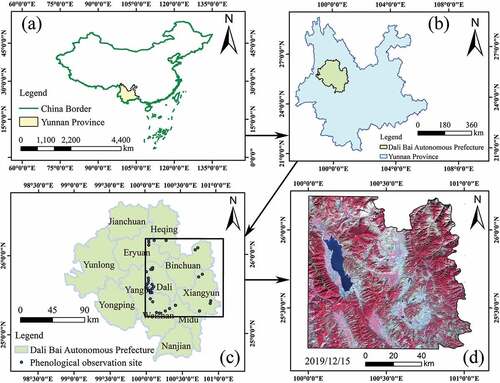
Figure 4. Spectral characteristics of different dominant tree species over time characterized by the MCCDC coefficients.
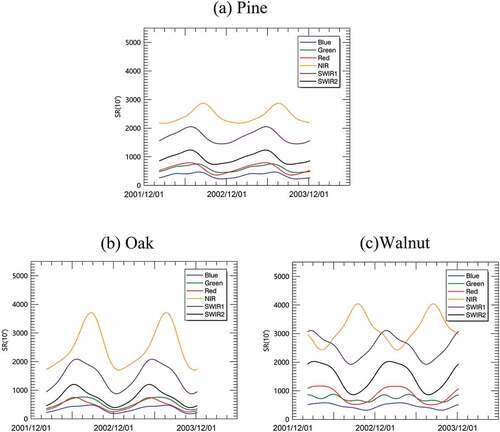
Table 1. Predictor variables for AGB modeling.
Table 2. Accuracy and confidence interval of the dominant tree species groups obtained from the model with only spectral variables in 2007 and 2016 (confidence level = 95%).
Table 3. Accuracy and confidence interval of the dominant tree species groups obtained from the model with the MCCDC coefficients and phenological parameters in 2007 and 2016 (confidence level = 95%).
Figure 6. Spatiotemporal distribution of the dominant tree species groups obtained from the model with the MCCDC coefficients and phenological parameters.
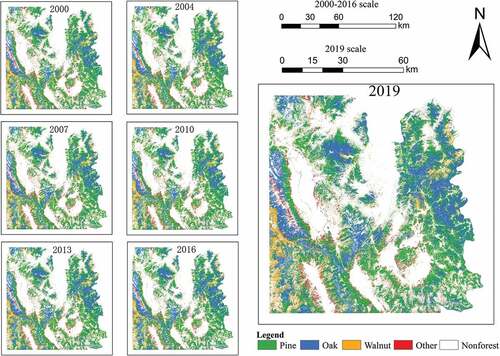
Table 4. Evaluation indices of models with different variable combinations.
Table 5. AGB accuracy of the proposed AGB model for different dominant tree species.
Data availability statement
The data that support the findings of this study (i.e. the land cover and probability maps) are available from the corresponding author and USGS (https://glovis.usgs.gov/).


